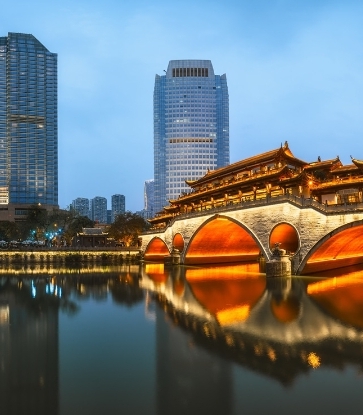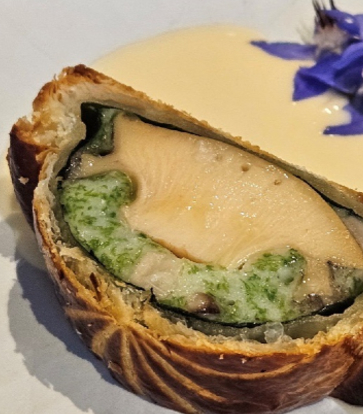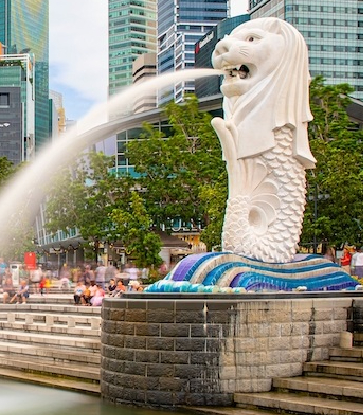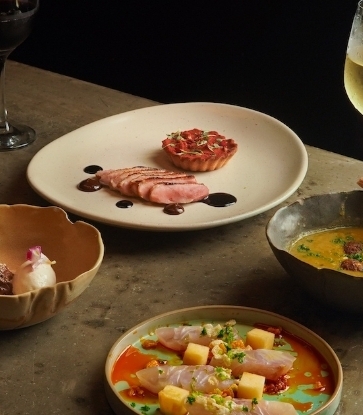“I used to think that sushi was cold,” admits Takashi Saito, chef-owner of Sushi Saito, the youngest sushi chef to head a three-Michelin-starred restaurant.
He only changed his mind after high school, when he worked part-time at a fishmonger’s and the owner took him for a celebratory meal at a proper sushi restaurant. That was the first time Saito had a formal sushi course seated at the counter.
“Before that, I’d only eaten sushi that was delivered to the doorstep,” says the chef now widely regarded as the “god of sushi”.
There is another precious memory of sushi he holds dear: the time when he had his first bite of Edomae-style sushi. “I come from Chiba, where the shari (sushi rice) has sugar added to it and is less refined. But after coming to Tokyo, I ate sushi that was seasoned with red vinegar or just salt. The difference in the taste of the shari touched me.”
He pauses in recollection: “The rice was warm. Initially, I was a little surprised that the rice was warm.”
These memories have been etched into his palate and now help to define the Edo-style sushi and dining experience in his three-Michelin-starred restaurant.

An Understated Cuisine
“Surely in this world, sushi is the only kind of food which is ‘pressed’ in front of you, and then eaten directly in that manner. Right in front of you, made by the hands of another person and eaten in front of that person … I really have not seen anything in this world that’s eaten like this.”
He muses: “The rules of the past haven’t changed. And I don't think they will change in the future either — the rule of sushi is to eat it as soon as it’s prepared. That’s the only rule of sushi.”
Even as the burgeoning art of sushi is winning fans everywhere in the world, Saito does not think this is a cuisine that packs surprises into a meal or makes people go wow.
He explains that this is because sushi can only find its expression according to the seasons and this presents to chefs the difficulty of working out something different within those limits. The same fish will taste different in spring, summer, autumn and winter.
The onus, then, is on the chef to put in the necessary effort and right techniques to work the ingredients so that the differences in each season, brought on by climate and the external environment, can be minimised.
He is quick to assert that the idea of cooking a particular ingredient into dishes is “the job of a restaurant chef”. Whereas for sushi chefs, their mission is to take the ingredients they have and present them to be eaten in the original state as far as possible.

“That’s sushi,” he says in a thoughtful manner. And the art of sushi has to be a personal interpretation. According to Saito, the forming of sushi has to be considered and executed personally.
“It’s not that I won’t teach it, but the way I do it cannot be done by others. Isn’t that what sushi is? There’s no recipe for the forming of the sushi. It cannot be written down. With regard to nigiri (the forming of the sushi), it’s something you have to do based on your own senses and sensitivity.”
Ask him to describe how he does it and he says softly: “I use a light touch to form sushi. So whether I hold it by hand or chopsticks, it doesn’t fall apart. But when sushi is in the mouth, the rice is ‘scattered’. This is the perfect form to me.”
Sushi Saito in Tokyo, proclaimed by top French chef Joel Robuchon as the best sushi restaurant in the world, is a modest, elegant space divided into two dining rooms, with just eight coveted seats.
When the MICHELIN Guide Digital team was there in late February, Sushi Saito was already fully booked for the rest of the year. The outpost in Hong Kong, which opened in March, has two counters and seats 16, with reservations opening six months in advance. As you might imagine, getting a seat is no mean feat.
Opening up more outlets in Japan is clearly not a priority. Rather, he would prefer to spend each day presenting the best the season has to offer to his guests.
Central to Sushi Saito’s success is the age-old Japanese tradition of omotenashi — this has been his guiding principle through the years. He thinks that neither creativity nor technique is sufficient to build a restaurant to three-star quality.
“Well, ultimately, isn’t the customer the one who decides what is delicious? What we feel is delicious may not necessarily be delicious to the customer, until the customer delivers (the food) into his or her mouth,” he says. “When customers eat and go ‘Ahh’ ... in that moment, I’m really really really happy.”
He affirms that giving one’s best is important, and so is technique and sensitivity, but questions how relevant these can be if a chef does not “have the feeling of wanting the customer to enjoy something delicious”.

A Hard Road To Success
The training young Saito received in the early days was traditional and rigorous. He started working as a sushi chef when he was 18 years old with the renowned Sushi Kyubey and went on to work with Shinji Kanesaka for 10 years, earning his stripes there.
Describing those days as “tough”, he lets on that he did not even get the chance to touch fish at all for a few years. Cleaning was what he did most of the time.
Looking back though, he thinks it is best not to take shortcuts, despite the hardships. Indeed, he suggests young chefs pay their dues and “walk that path properly”.
“I think the first three years are the most important — which shop you choose, the type of practice and training you engage in. In the next five years, the next 10 years, the difference [in your mastery of skills] will emerge.”
He finally got to serve at the sushi counter when he was 25 and decided to strike out on his own in 2004, opening his eponymous restaurant when he was 33.

Sweet Returns
Sushi Saito received its first Michelin star in 2007 and its second the next year, before clinching its third in 2009. It has kept those accolades since.
Though low-key and media-shy, Saito is held in extremely high regard in Japan and is the only Japanese sushi chef considered to be a match for the legendary Sukiyabashi Jiro.
Easily one of the world’s top sushi masters now, but still extremely humble and down to earth, he visits the Tsukiji fish market every dawn and hand-picks his own produce for both the Tokyo and Hong Kong restaurants. To him, sushi is what has made him stronger and helped him understand people better.
“To put it simply, it’s about welcoming the customer. To welcome the customer, we must make preparations — in our appearance, in our techniques and in our heart as well.”
Guests come from all over the world, and even include members of the Japanese Imperial family, but for him, serving his parents on the other side of the counter was most difficult, emotionally speaking.
“They’ve known me since I was a baby. My hands shook the most while I was forming the sushi. My mother cried. As for my father, well, he didn’t say anything, but even as we talk about it now, I can feel the tears coming on. It was the best way to repay my parents — while I was forming the sushi. Even now, I feel moved within me.”
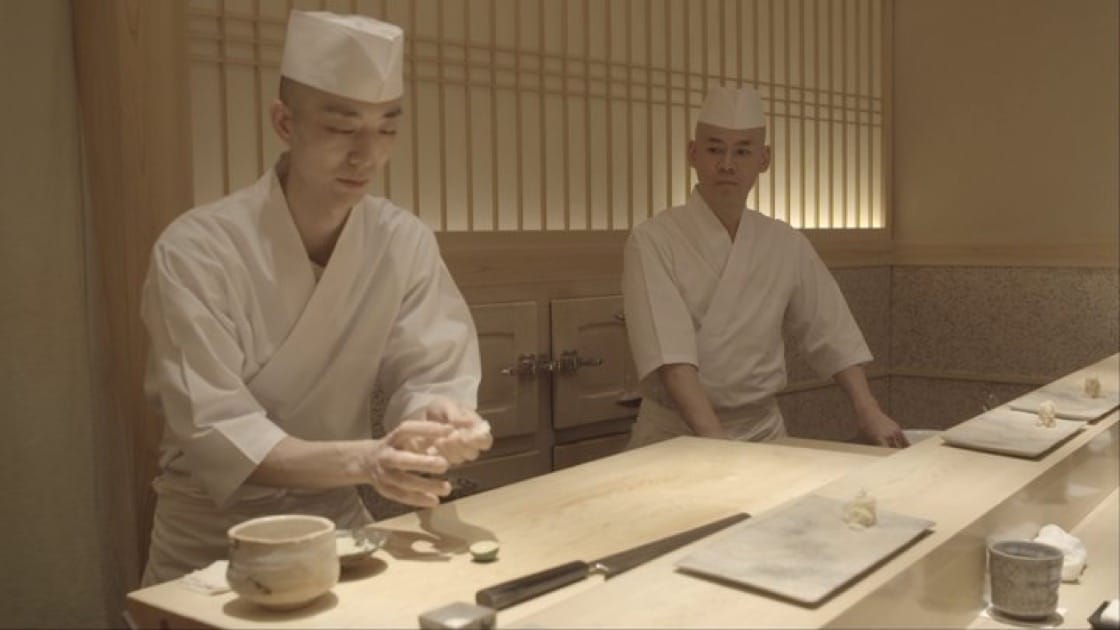
Success Is Yet To Come
Asked how he stays self-disciplined and maintains top form, Saito remarks matter-of-factly that he does not do much other than keeping healthy and never allowing himself to fall ill.
“I’m not that stoic, but I must never catch a cold. Even when I don’t feel so well, up till now I’ve never taken a rest day ever. For me, whether I’m in a good mood or a low mood, once I put on my cap and fasten the front of my uniform, there’ll be no problem.”
Despite his achievements, he does not consider himself to be successful yet. “In 10 or 20 years, when I’m about 60, if Sushi Saito is still around, then maybe I’d have succeeded a little,” he says.
He hopes that in time to come, Saito will be a name synonymous with sushi.
He also has plans to run a school, not like a vocational school, but an operational sushi shop that will allow young apprentices to put what they learn into practice. He currently has 10 young chefs under his wing in Sushi Saito and his vision is to have Saito graduates “get their own shop one after another”.
One such protégé is Ikuya Kobayashi, who has set himself apart with his skill and was handpicked by Saito to man the fort in his Hong Kong outpost.
Ask him about setting up outposts overseas and he feels strongly that his renown outside of Japan has been enhanced by the robust messaging of the MICHELIN Guide.
For the new restaurant, he personally selects the cuts of fish every morning from Tsukiji and these are flown to Hong Kong the same morning. From the soya sauce to the rice with his signature mild red vinegar, the ingredients are identical to what is served in his Tokyo establishment, ensuring that his Edo-style sushi is prepared to the same exacting standards that propelled his original restaurant to stardom.







